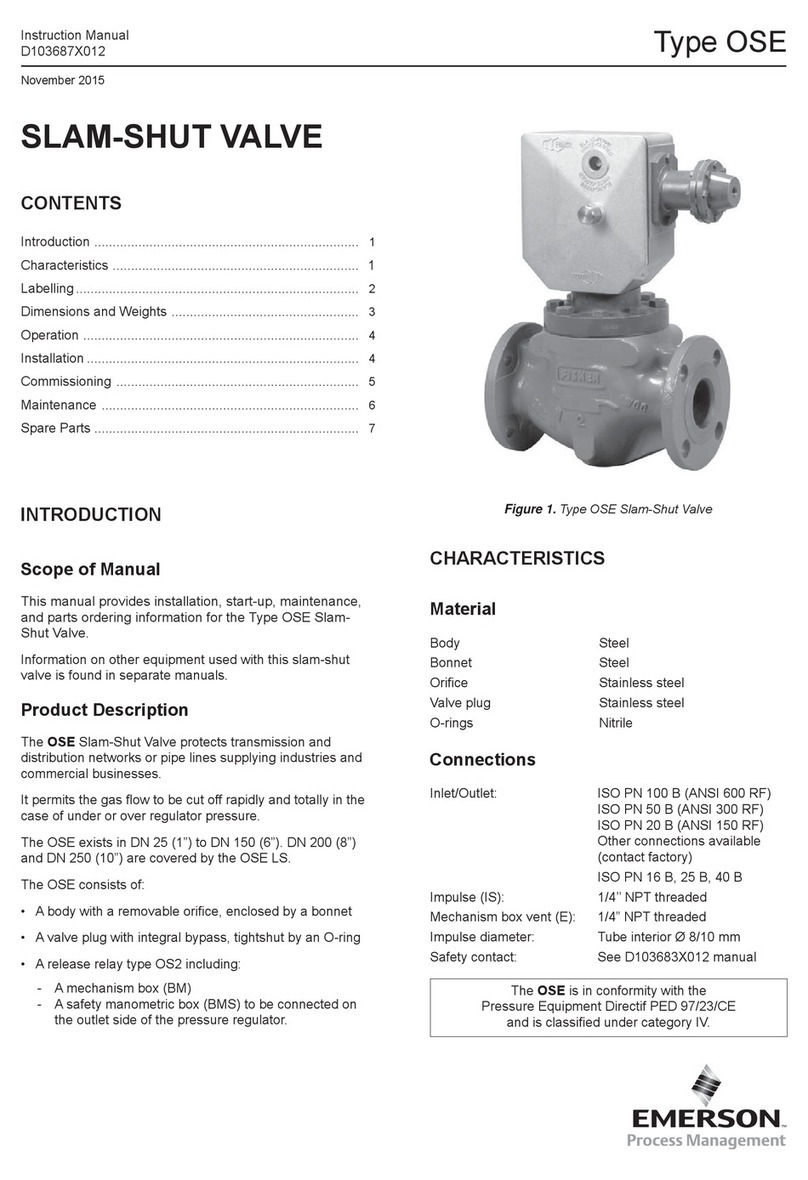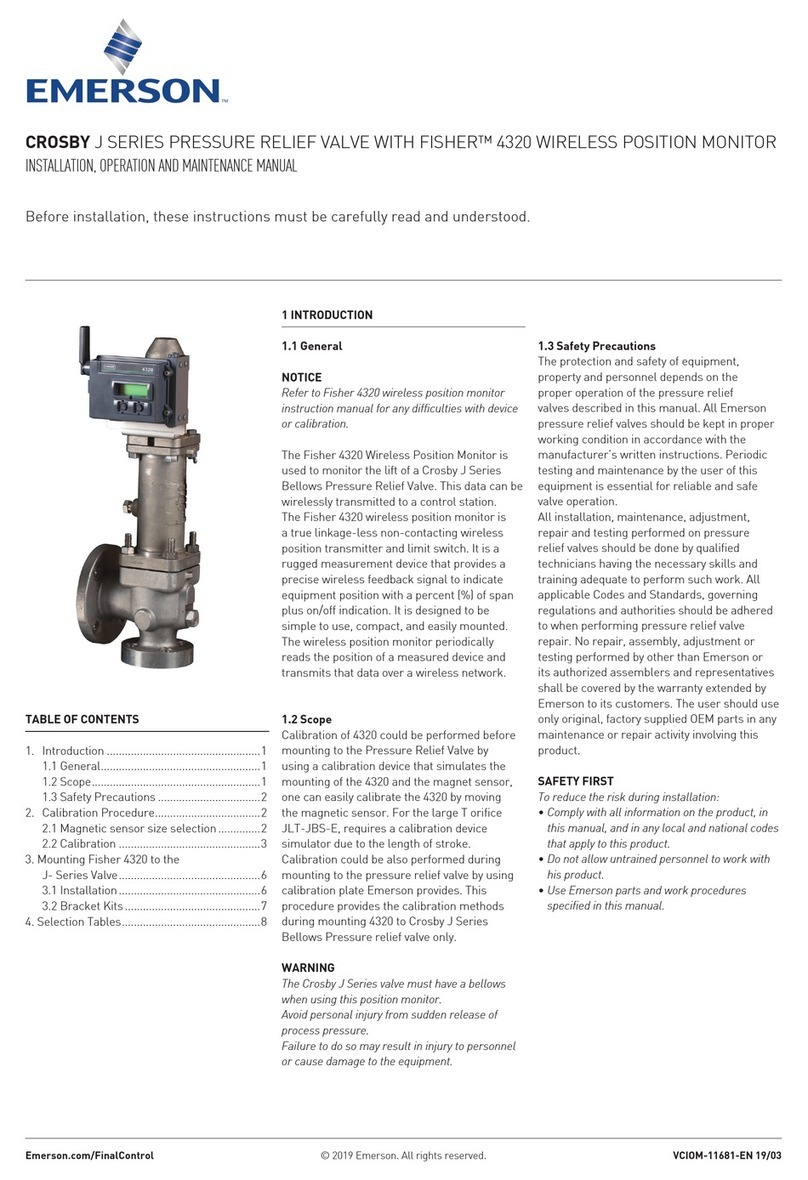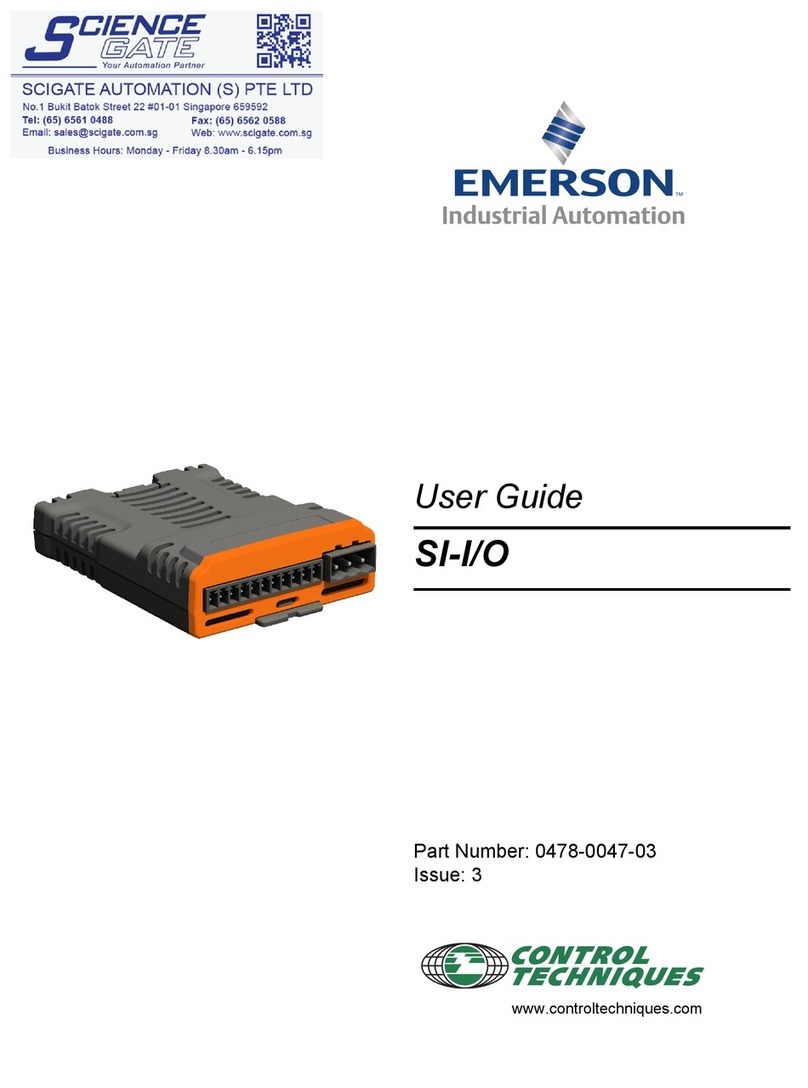Emerson Fisher 8532 User manual
Other Emerson Control Unit manuals
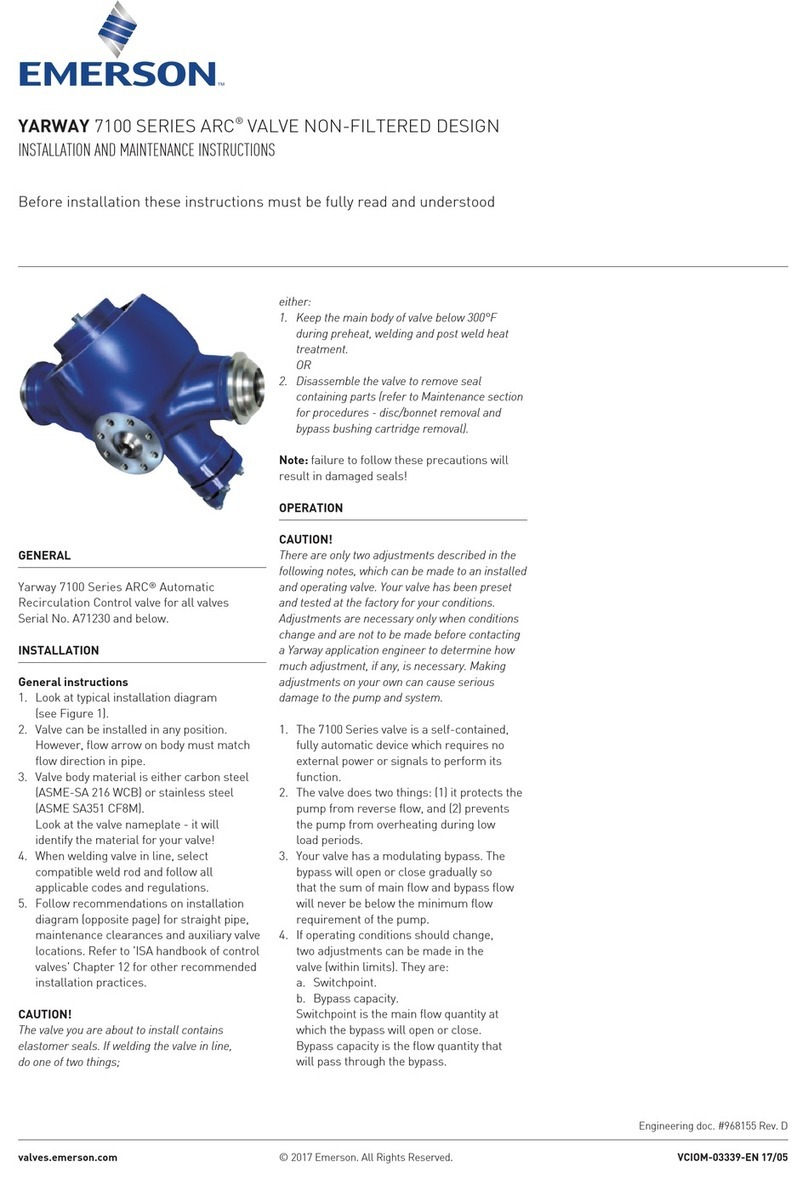
Emerson
Emerson Yarway 7100 Series User manual
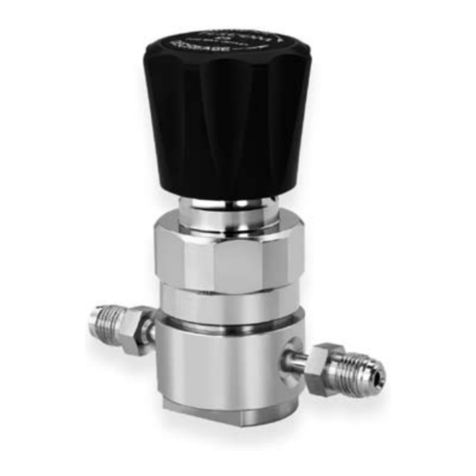
Emerson
Emerson TESCOM 64-2600 Series User manual

Emerson
Emerson Keystone K-LOK 360 Series Guide

Emerson
Emerson Fisher V150E User manual
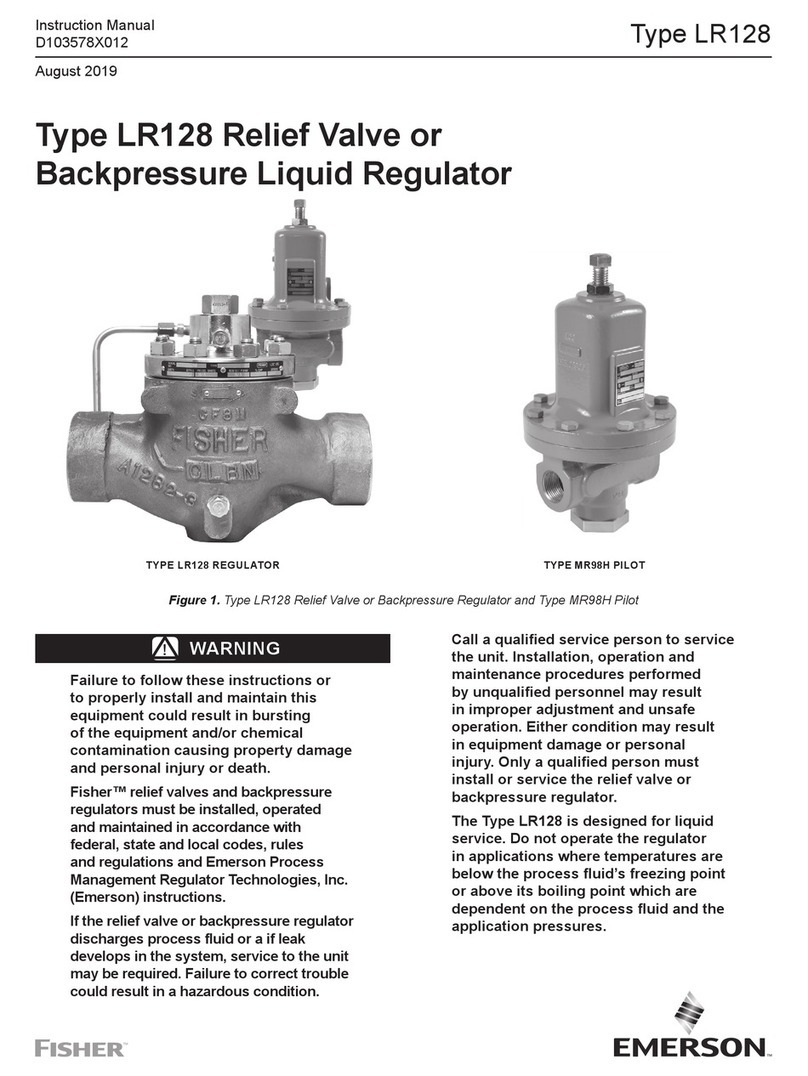
Emerson
Emerson FISHER LR128 Series User manual
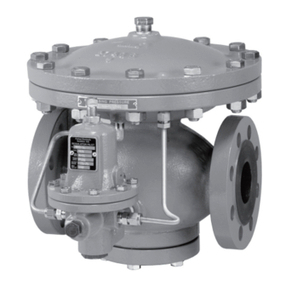
Emerson
Emerson Fisher 92B User manual
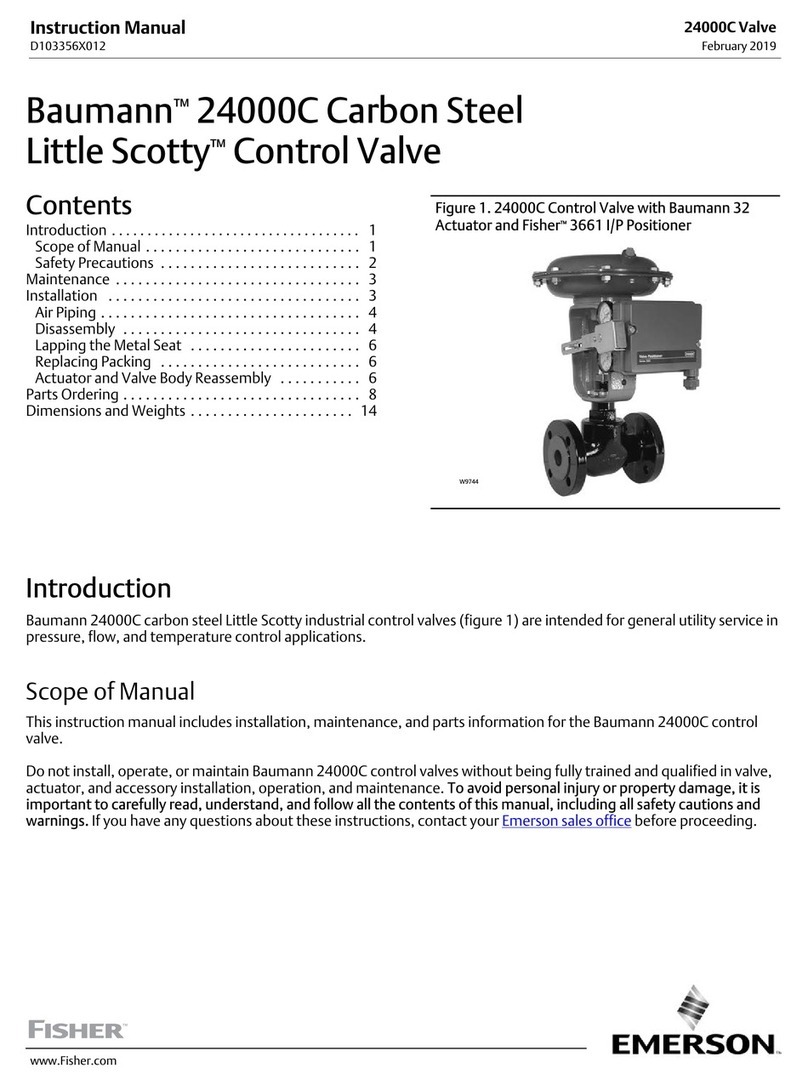
Emerson
Emerson Fisher Baumann Little Scotty 24000C User manual
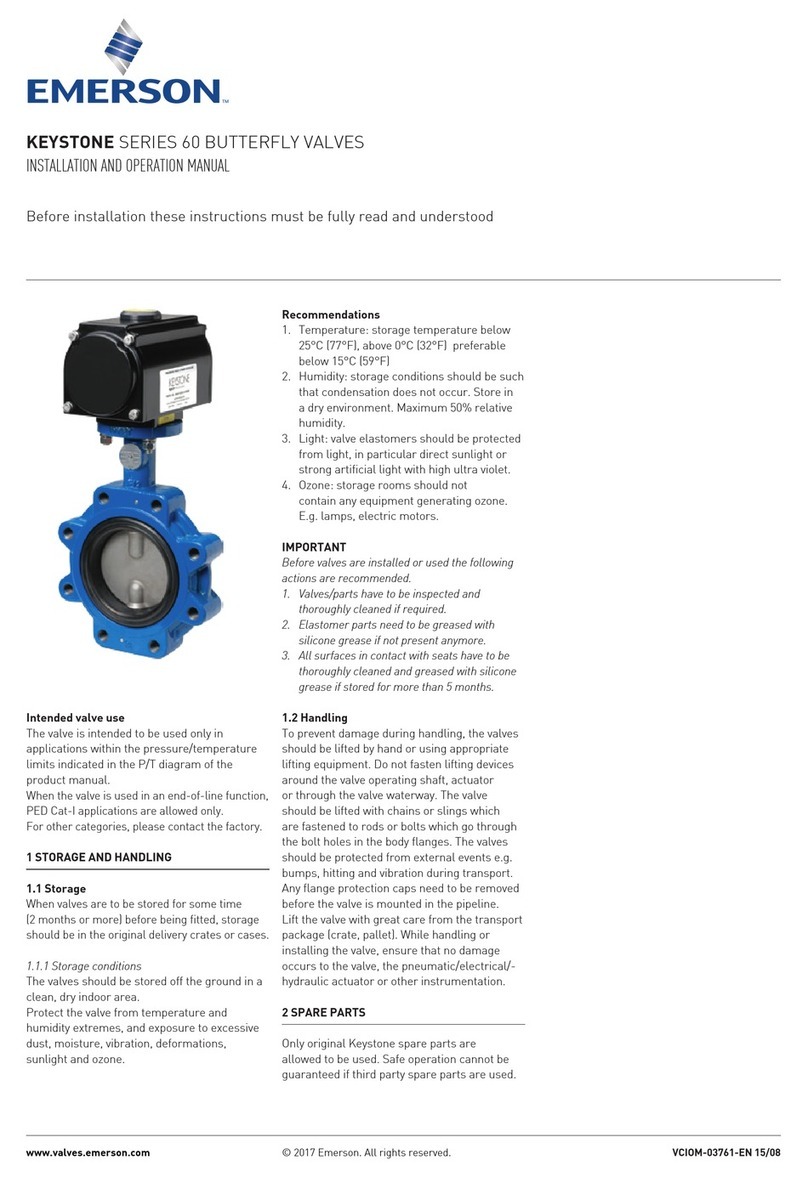
Emerson
Emerson KEYSTONE 60 Series User manual

Emerson
Emerson Bettis Q series User manual
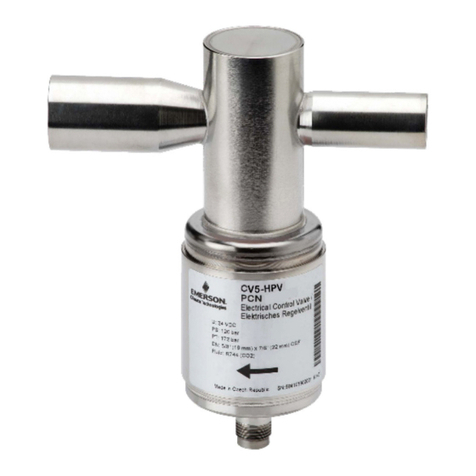
Emerson
Emerson CV4-7 Series User manual
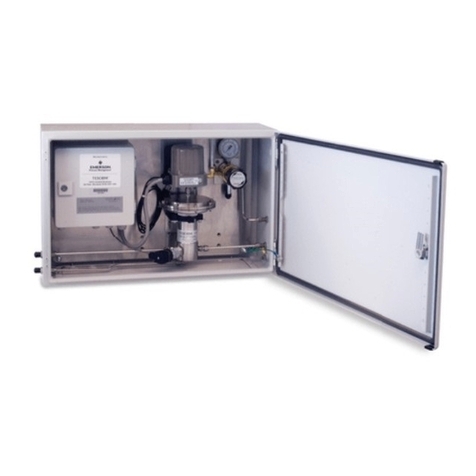
Emerson
Emerson Tescom ER5K User manual

Emerson
Emerson Fisher 167DA User manual

Emerson
Emerson Raimondi HPA 150 Installation and operating instructions
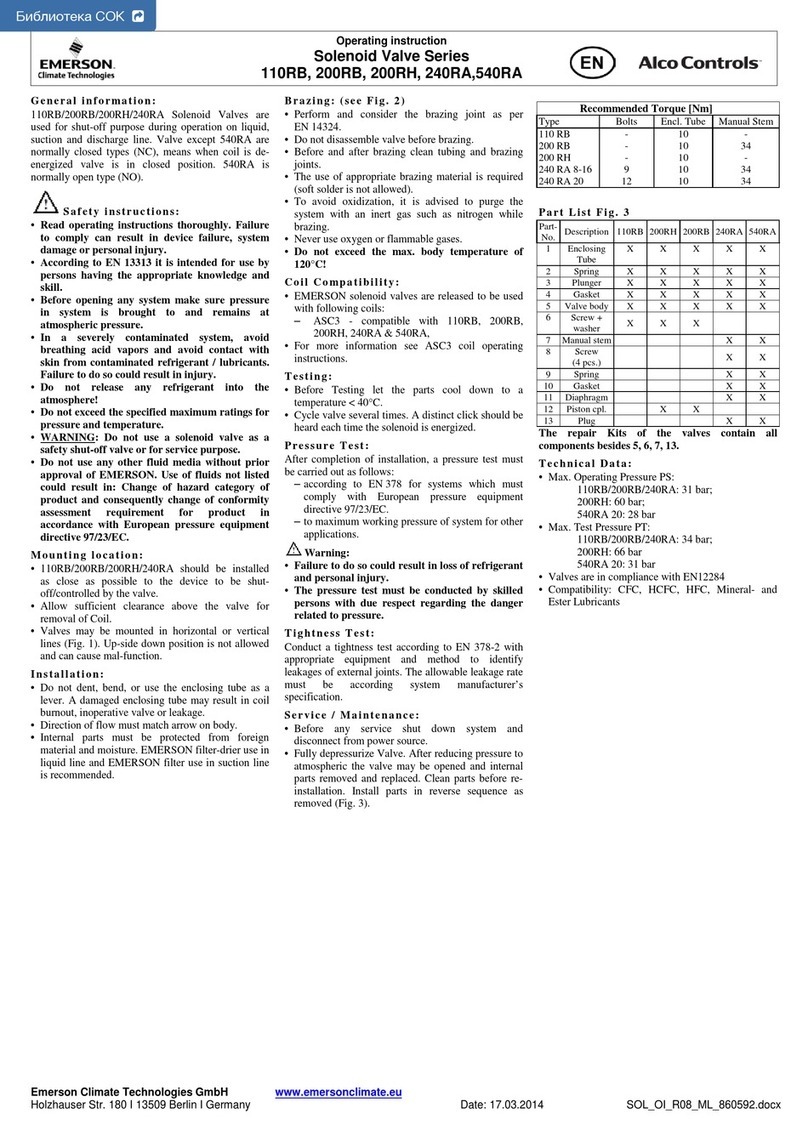
Emerson
Emerson Alco Controls 110RB User manual
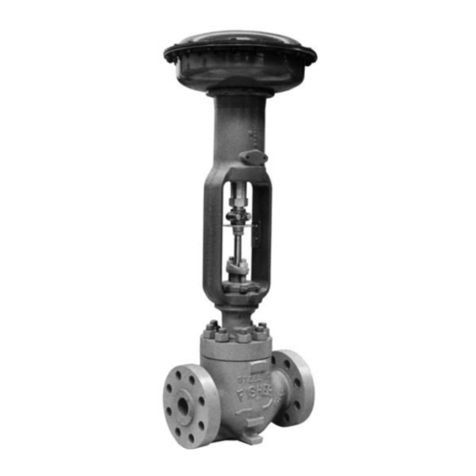
Emerson
Emerson Fisher EHD User manual

Emerson
Emerson Asco 330 Series User manual

Emerson
Emerson AVENTICS TV04-CV User manual
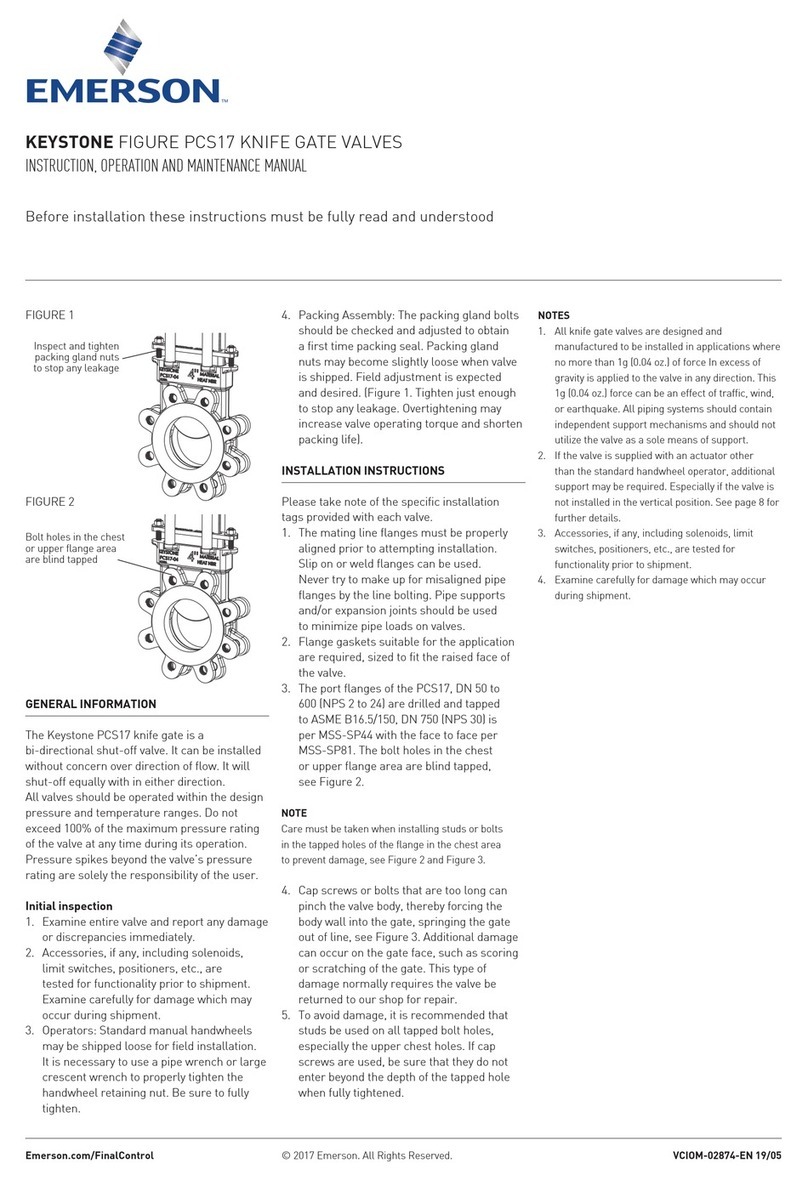
Emerson
Emerson KEYSTONE FIGURE PCS17 Operation and maintenance manual
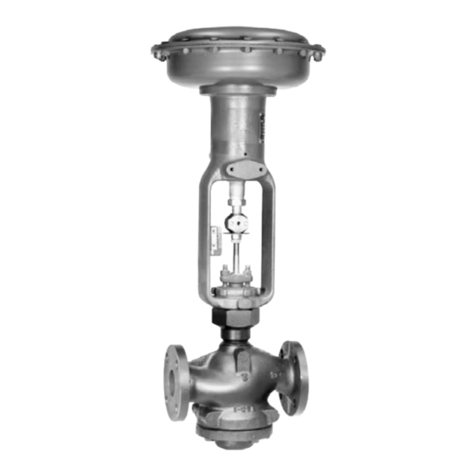
Emerson
Emerson fisher EDR User manual

Emerson
Emerson Rosemount BP20E User manual
Popular Control Unit manuals by other brands

Festo
Festo Compact Performance CP-FB6-E Brief description

Elo TouchSystems
Elo TouchSystems DMS-SA19P-EXTME Quick installation guide

JS Automation
JS Automation MPC3034A user manual

JAUDT
JAUDT SW GII 6406 Series Translation of the original operating instructions

Spektrum
Spektrum Air Module System manual

BOC Edwards
BOC Edwards Q Series instruction manual

KHADAS
KHADAS BT Magic quick start

Etherma
Etherma eNEXHO-IL Assembly and operating instructions

PMFoundations
PMFoundations Attenuverter Assembly guide

GEA
GEA VARIVENT Operating instruction

Walther Systemtechnik
Walther Systemtechnik VMS-05 Assembly instructions

Altronix
Altronix LINQ8PD Installation and programming manual
